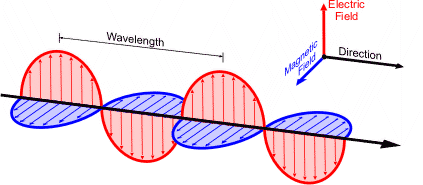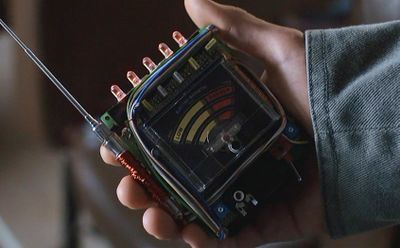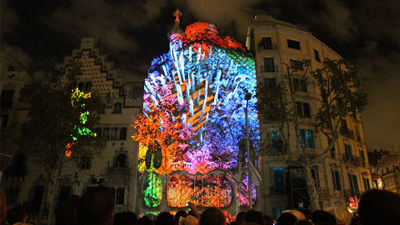EM
Contents
Electro Magnetic
Introduction
In the first 2 weeks of the graduation year (Minor Digital Craft) this project has been made. This is a group assignment consisting of; Boris (Grafic Design), Pascalle (Lifestyle and design), Rens (Grafic Design), Emma (Spatial Design).
The assignment says to make a project about electro magnetic radation. The result is flexible, there are no real rules or obligation to work with except the theme and that you can show something (so not only a concept)
After 5 work days the first presentation will be given, this is only to announce the idea and possible ways of production. This will be for the third year students of Digital Craft.
After two weeks the end presentation will be shown as an exposition at the Wijnhaven.
What is Electro Magnetic Radiation
Electromagnetic (EM) radiation is a form of energy that is all around us and takes many forms, such as radio waves, microwaves, X-rays and gamma rays. Sunlight is also a form of EM energy, but visible light is only a small portion of the EM spectrum, which contains a broad range of electromagnetic wavelengths.
Electricity and magnetism were once thought to be separate forces. However, in 1873, Scottish physicist James Clerk Maxwell developed a unified theory of electromagnetism. The study of electromagnetism deals with how electrically charged particles interact with each other and with magnetic fields.
There are four main electromagnetic interactions:
1. The force of attraction or repulsion between electric charges is inversely proportional to the square of the distance between them. 2. Magnetic poles come in pairs that attract and repel each other, much as electric charges do. 3. An electric current in a wire produces a magnetic field whose direction depends on the direction of the current. 4. A moving electric field produces a magnetic field, and vice versa.
Electromagnetic waves are formed when an electric field (shown in red arrows) couples with a magnetic field (shown in blue arrows). Magnetic and electric fields of an electromagnetic wave are perpendicular to each other and to the direction of the wave. Credit: NOAA. </gallery>
Source: *http://www.livescience.com/38169-electromagnetism.html
First Idea
S While researching other art projects based on radiation we stumbled across an tutorial about transforming a cassette recorder into a audio device that can produce the sound made by radiation.
Source to tutorial video: *https://www.youtube.com/watch?v=L5YfxoZa9AY
We made the device as the tutorial explained and started using the device in our direct environment, this includes; phones, laptops, audio recorders, boxes. We made a video about the results:
The sounds we have recorded about the different devices gave us inspiration about the next steps we would like to make.
The group came together and we decided to split up for the next experiments so we can all focus on a different part and therefore make faster progress. Each team member had a preference for a certain experiment;
Boris: 'Orchestra' collecting sounds from different devices through the cassette recorder. He wants to find a way to make the different elements that make sound work together.
Rens: This idea is about collecting data gathered from different radiations produced by random objects. He would like to make a publication of his findings.
Pascalle: 'Visualising the radiation' this part is about finding ways to visualise the different radiations emitted. The visualisation will focus on colouring.
Emma: 'Mapping school' This plan is focused on the Willem de Kooning Academy. With a EMF - meter (Electro Magnetic Field detector) the school will be measured and eventually brought back into a data visualisation.
These different experiments will bring different outcomes, we hope to find things we did not expect. With the found information we will make new plans, these can consist of a combination between the different idea's or the group decides one experiment to continue with.
Emma's Idea
I want to map the Willem de Kooning Academy based upon Electro Magnetic Radiation strength. I will do this by making my own EMF meter so I can walk around school and measure the strength everywhere. The information I plan to gather will be translated into a further visual aspect by Pascalle, who is working on translating EMF strenght into colours.
An EMF meter means Electro Magnetic Field meter. EMF meters are mostly used as 'ghost detectors', they can measure the amount of Electro Magnetic Radiation in the air and report back in numbers. The meter is a exact tool to measure radiation, the result will look like a map full of numbers, this result will be passed through to pascalle who can use these numbers in her code for the visualisation.
http://www.ehow.com/how_8491207_build-emf-detector.html This is the link to the tutorial about making the EMF meter. It took some time to find the components together but the assembling should go much faster. I am making my own EMF meter because it is hard to get a cheap meter in the Netherlands, I also think that building this meter will give me a beter insight into the way the device is made, so I might find new ways to measure the radiation which i can eventually use for the project.
THis image shows a possible combination of mapping the school radiation levels through colouring in a visual way.


